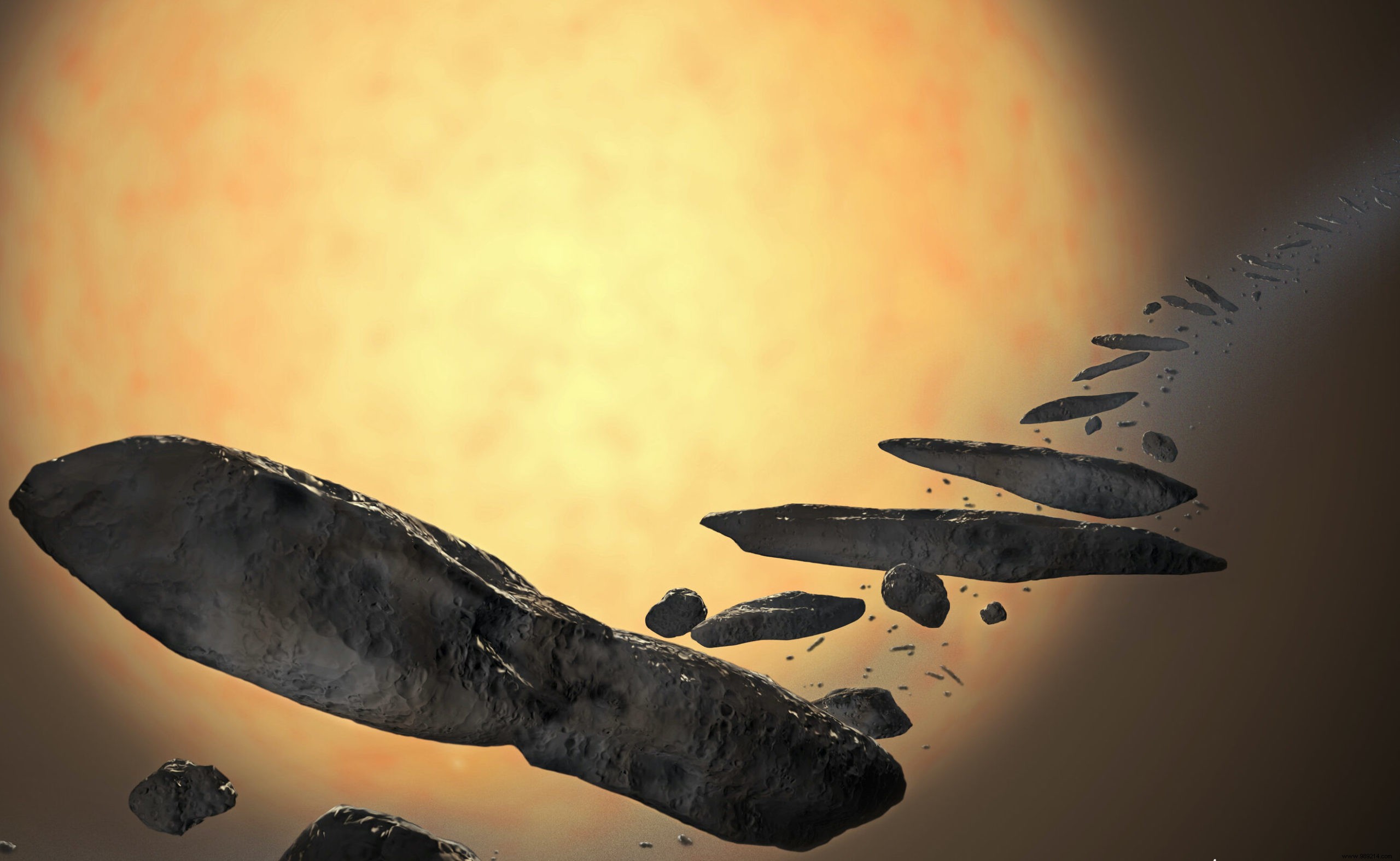Nearly five years after its detection, the nature of Oumuamua, the first known interstellar visitor, is still unknown. While the object is leaving our system, a group of researchers proposes to send a mission directly on site to study it before it is too late.
In October 2017, a team announced the first detection of an interstellar visitor named 1I/2017 U1, or simply Oumuamua ("distant first messenger", in Hawaiian). According to analyzes of its trajectory, the object in question, which measures about 400 meters in length , probably comes from a corner in the direction of the Constellation Lyra .
This first intruder then intrigued the scientific community. Indeed, its cigar shape contrasts with the more rounded shapes we are used to. From tracking its trajectory, we also know that the object had accelerated as it approached the Sun, suggesting that it had released gas like comets can.
A few months ago, work published in the journal Nature Astronomy this time proposed that the object could be the fragment of a planet or another large rocky object having undergone a process of tidal disturbance after approaching a little too close to its star.
In the meantime, some have speculated that it could possibly be a spaceship. In 2018, members of the Breakthrough Initiatives project even studied the object using the Green Bank Telescope, the world's largest steerable radio telescope, to detect (or not) signs of radio transmission. In the end, the latter had drawn a blank.
So we still don't know exactly what object it is. The problem is that scientists have only had a fleeting glimpse of Oumuamua, because the latter was already on the move when he was discovered. And if the best way to understand its true nature was to pay him a little visit?

This is what a group of volunteer researchers from the Institute for Interstellar Studies (i4is), a UK-based not-for-profit, is proposing as part of of the Lyra project.
According to the group's latest article, published on the arXiv preprint server, a ship launched in 2028 could indeed use the assists of Earth, Venus and Jupiter to propel itself and catch up with interstellar space rock. NASA and other agencies very often use these maneuvers to speed up their spacecraft or throw them on slightly different trajectories, so that they can reach their targets.
In fact, Oumuamua himself took advantage of gravitational assistance as it passed close to the Sun, thus temporarily accelerating to speeds approaching 300,000 km/h . When it exited our system, its average interstellar speed had fallen to about 95,000 km/h .
The Lyra project studied two possible trajectories, one passing in front of the sun and the other in front of Jupiter. Finally, the second option seems the least complicated on paper, this one not involving any heat shield to protect against the heat of our star.
According to the team, starting in 2028, relying on chemical propulsion engines, as well as gravitational assists from Earth, Venus and especially Jupiter , a ship could reach Oumuamua in about 26 years . According to their calculations, a probe could arrive on site at just 18 km/s, enough time to analyze the object during approach and departure.
Obviously this is just a paper idea for now, but Oumuamua remains the closest interstellar object we have access to. Thus, the scientific benefits of such a mission would be immeasurable.